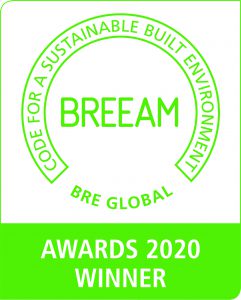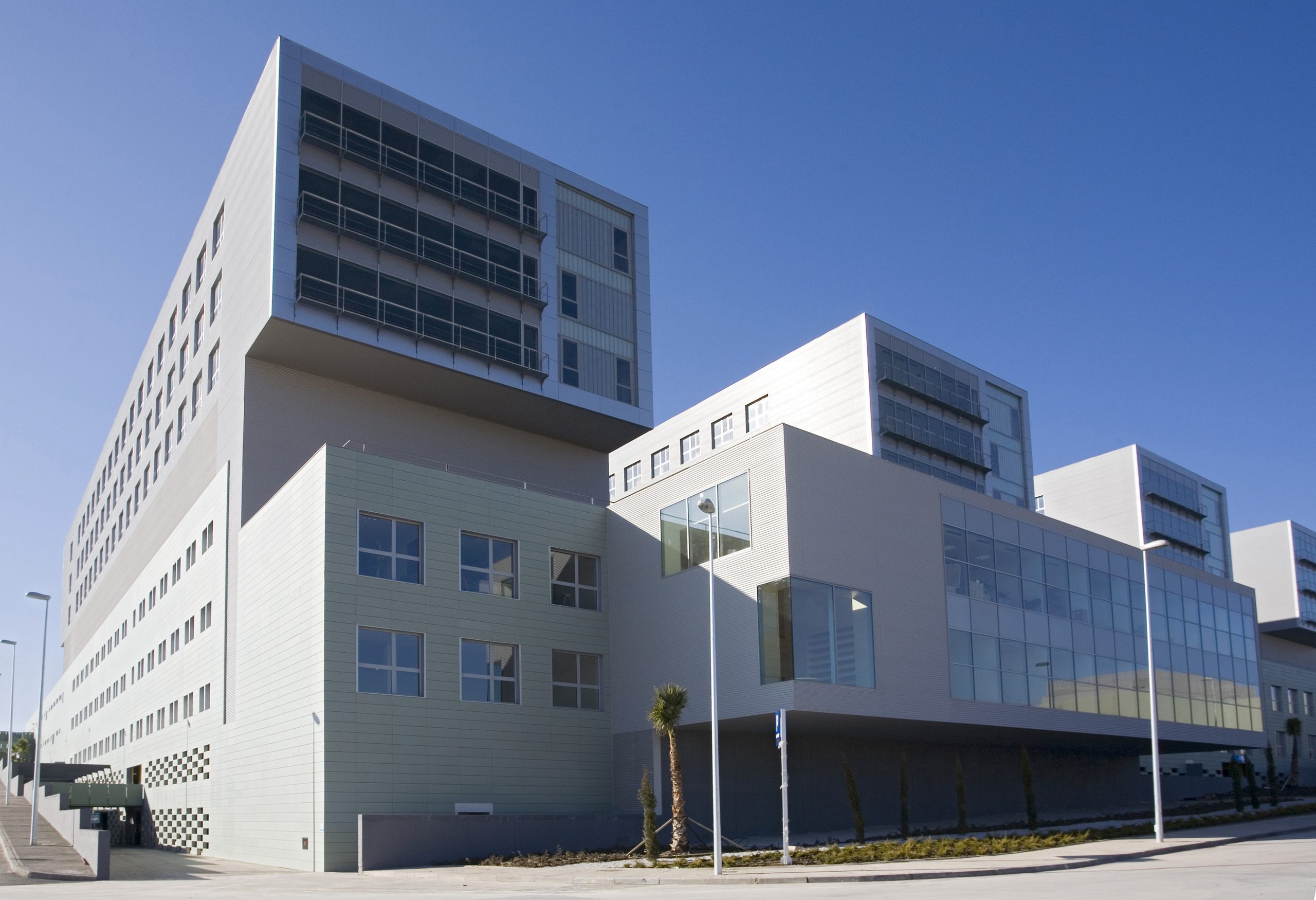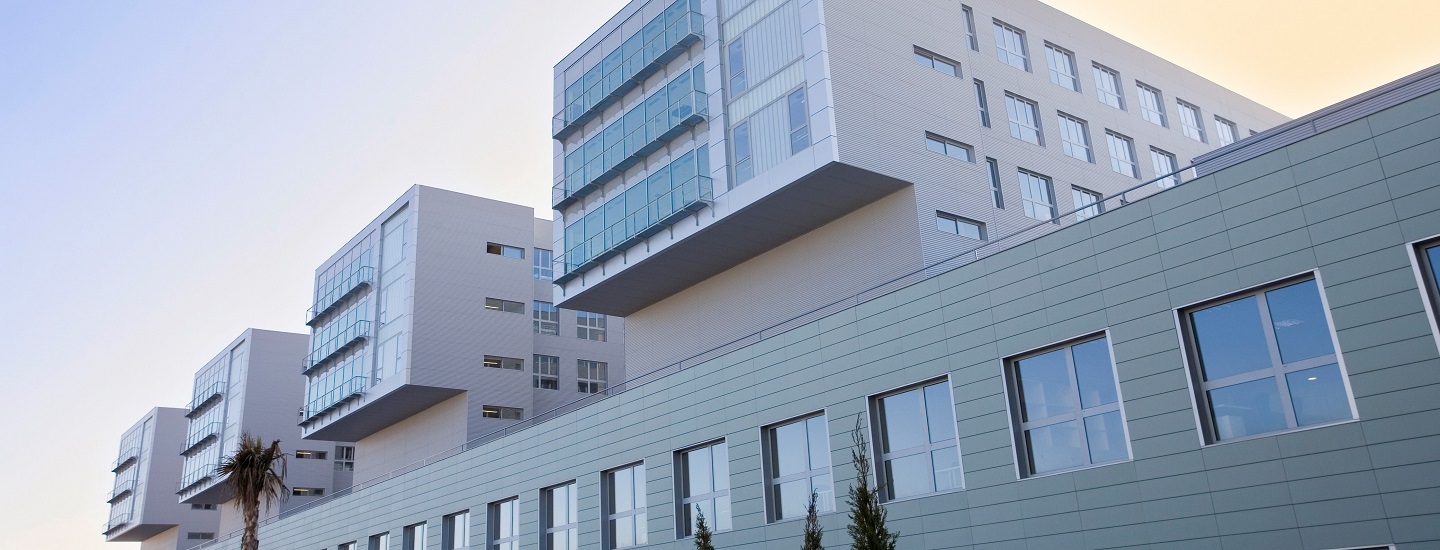A hospital with sustainability at its heart

Project Details
- Scheme & Version: BREEAM in-use 2014
- Certification Stage: Certified
- Overall Score: Part 1: 61.19%,
Part 2: 76.42%
Project Team
- Developer / Client: ACCIONA
- Architect: Pardo Tapia Arquitectos
- Building Services: ACCIONA
- Constructor: ACCIONA
- Assessor Company: Raquel García Rodríguez
About the Building
“Hospital Universitario Infanta Sofía” (HUIS) belongs to the public network of hospitals of Madrid Community. The Hospital is managed under a public-private partnership, where the Health Administration takes over care services and ACCIONA manages infrastructures, including non-care services and Energy Efficiency. The HUIS began its operation in 2008 to serve a population of 325,800 inhabitants from the northern part of Madrid. More than 800,000 patients pass through HUIS each year and 1,900 professionals work there.
The hospital has an area of 144,000 m2, with 88,000 m2 of gross area, 258 hospital beds, 14 operating rooms and 135 consultation rooms; in addition, the Central Laboratory of Clinical Analysis of Madrid Community and the UCR, where the results of Imaging Diagnostic of 7 hospitals are reported, are located there.
Our work is focused on making the hospital an increasingly sustainable building for the environment, patients and the professionals who work in it. To do this, we research and implement equipment and facilities renovations, improve the different hospital care areas and improve the quality of care while making it more sustainable.
We have boosted SHW (sanitary hot water) production by improving the performance of the solar-thermal installation; we eliminate the centralized steam production to adapt the percentages of RH by installing integrated steam producers into the air treatment equipment; we have progressively eliminated incandescent lighting by using LED lighting and, we are also eliminating the incandescent lamps via LED lighting in a second phase. There is a Sustainability Commission, formed by the Hospital Health Administration and ACCIONA, which introduces improvements aimed at reducing the carbon footprint, renewing and conditioning the units to achieve humanization objectives.
As an example, an automated night light manages to consume less energy and reduces lighting incidence from the corridors into the rooms, maintaining an adequate continuous level for care, while respecting the rest of hospitalized patients’ rooms.
Since its opening, the Hospital has increased its healthcare activity year after year, and yet, it has reduced its electricity demand by 23%, its demand for natural gas by 52% and, its water demand by 12%; all this, of course, without compromising on quality care.

Why did the building undergo BREEAM certification?
The decision was made to certify the building under BREEAM because of ACCIONA’s strong commitment to sustainability. BREEAM has provided ways to improve and be innovative thanks to its certification requirements which have benefited all hospital users through establishing improvements in the working environment, improving accessibility for users and creating economic returns thanks to the reduction of consumption of various resources.
BREEAM is a tool to reaffirm the inescapable responsibility that both public institutions and private corporations must assume to create sustainable and environmentally friendly environments.. BREEAM differentiates and marks us as a leading example to be followed within hospital sectors, demonstrating how design and management guidelines should be in any building.
Waste- A score of 100% was achieved in this category. The hospital has a separation area for waste next to the loading and unloading areas where different types of recyclable waste are separated such as: pruning remains, paper, glass, packaging, lamps, toners, and other hazardous waste. There are recycling bins distributed all along the hospital and, training on waste separation is provided to workers. A monthly control of the generation of differentiated waste, either solid or hazardous, is taken.
Materials-A score of 85% in Part 1 and 100% in Part 2 was achieved in this category. This was achieved through regular and thorough building inspections to maintain service and facilities optimally. Policies and certifications that support our commitment to sustainability from different points of view (energy efficiency, water consumption, waste management, responsible sourcing, safety and health) are available. In addition, the building and its facilities, since its conception, are designed to be adapted to future demands arisen from use or other demands coming from climate change so as to ensure occupants’ comfort.
Management- A score of 88% was achieved. This was achieved due to the Environmental Management policy implemented in the HUIS, the working groups involved, as well as the binding Green Contract of energy reduction with the Public Company.
Health & Wellbeing- A score of 81% was achieved in this category. The health and safety requirements of work processes are maximized to prevent any type of contaminant from leaving the reform areas. It is included as part of our purchasing policy to improve air quality, low-product VOCs; there is a Comprehensive Hygiene program that establishes periodic and thorough cleanings. The configuration of the hospital allows almost all spaces to have natural lighting (thanks to the windows distributed on its facades, skylights and interior courtyards) and also a policy was developed so that the configuration of work tables is in line with the use of it
Water- During the last three years, measures to encourage responsible consumption have been increased and procedures and equipment to improve water consumption efficiency have been incorporated:
- Adjustments of flows and pressures are made systematically.
- New meters have been installed to have a greater knowledge of their consumption.
- A procedure has been established for the use of water in the irrigation of gardens.
- Consumption is monitored, making comparisons to see possible deviations
- Water purification controls are performed daily.
Green Strategy
One of the challenges driven from ACCIONA is to reduce the carbon footprint reduction of all managed infrastructures. Consumption and production waste is monitored to establish guidelines for action to control and reduce its impact in the hospital.
BREEAM sets out milestones and challenges that guide us to take action and establish procedures that make us more sustainable.
In the hospital, we have a multidisciplinary team of technicians, architects and engineers whose mission is to filter all actions in order to achieve the minimum environmental impact and a permanent search for solutions and updates to improve hospital patients’ and professionals’ efficiency, comfort and safety. To do this, we use state-of-the-art tools, such as: the most advanced BMS systems, real-time monitoring of the hospital’s energy behavior, performance on the facilities from maintenance technicians’ smartphones and, remote control of facilities from an ACCIONA EE building control center, from where we are informed of any energy deviations at the time they occur.

Benefits of Assessing to BREEAM
BREEAM certification, of course, is not only a merit we are proud to own, it is also an element of learning and an experience to be applied to other ongoing project to guide them.

